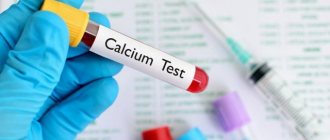Hemoptysis is quite typical for lung cancer; sooner or later it occurs in almost half of patients. Hemoptysis is blood in the sputum in each spit or less often, streaked or completely mixed with mucus, but not more than 50 ml per day. More blood in the sputum is a sign of pulmonary hemorrhage. In the manuals for thoracic surgeons, pulmonary hemorrhage (PH) is defined as “coughing up blood, which is manifested by hemoptysis or bleeding.”
Hemoptysis can be quite long-lasting. It does not affect the patient’s condition, but is psychologically depressing. Bleeding not only worsens the condition and all indicators of body function, but can be life-threatening.
Pulmonary hemorrhage varies in intensity; experts have different estimates of its massiveness; in some cases, massive bleeding is considered to be the daily loss of a standard medical tray of blood - 600 ml, in others - more than a liter.
Types of pulmonary hemorrhage
Since 1990, domestic specialists have used the classification of pulmonary hemorrhage into three degrees:
- First, A, B and C - successively from 50 to 500 ml of daily blood loss;
- Second, A and B - from 30 ml to 500 ml in an hour;
- Third degree, A and B - simultaneous outpouring of up to 100 ml of blood or more.
Tactics for different intensities of blood loss differ, and if the patient’s hemoptysis does not frighten the oncologist, although he makes adjustments to therapy, then bleeding from the lung requires urgent medical and resuscitation care.
Book a consultation around the clock +7+7+78
4.Treatment
Obviously, the strategy and tactics of care are determined by the diagnosed (or most likely, taking into account clinical data) causes of bleeding.
It is not possible to list or describe at least the main options for conservative and/or surgical treatment. However, in all cases, the primary task is hemostasis (stopping bleeding), stabilization of basic vital signs (blood pressure, heart rate, respiratory rate), elimination of the root cause and/or relief of exacerbation of the underlying disease, blood replacement according to indications, decisive measures to prevent severe complications, the likelihood of which given these conditions circumstances is very high.
How does pulmonary hemorrhage occur?
In principle, hemoptysis is possible with any serious pathology of the lungs and even with banal bronchitis, with infections and heart diseases. But the cause of bleeding from the vessels of the pulmonary structures is most often malignant tumors of the bronchi. This is followed by primary tumors of the lung tissue itself and metastases into the lungs of malignant tumors of any organs. In every tenth patient with lung cancer, bleeding is the first obvious symptom of the disease, but on average, bleeding of varying intensity occurs in every fifth patient during the course of the disease.
In cancer, the cause of bleeding lies in a vessel corroded by the tumor. A cancerous tumor spreads into surrounding tissues, germinating them, replacing normal tissues with tumor ones. The bronchial wall is penetrated by vessels, which are also involved in the tumor; the tumor seems to “eat” them, forming a defect in the vascular wall, which is easily penetrated by the blood flow. The walls of the ruptured vessel cannot collapse because they are immobile due to the rocky density surrounding the tumor. The vessel gapes with its lumen, from it blood flows freely into the lumen of the bronchus and is thrown out by a cough reflex. The defect in the vascular wall may be tiny, but the larger the diameter of the damaged vessel, the more intense the bleeding.
Up to 80% of pulmonary hemorrhages meet the criteria of the first degree of severity. Massive bleeding, they are even called lightning due to the loss of blood “a mouthful”, is observed in only five out of a hundred, but only a few survive such bleeding. You are lucky if the bleeding happened in a hospital, because two thirds of patients die within the first hour from the onset of bleeding without medical assistance.
Any bleeding that occurs at home is a disaster; pulmonary hemorrhage is a terrible tragedy, because for such a case, urgent evacuation to a specialized intensive care unit is simply vital. Of the patients who reached a regular hospital, only a few also survive. And they die not so much from blood loss as from asphyxia - the filling of the pulmonary alveoli with blood flowing down the bronchi, which disrupts gas exchange, and without oxygen there is no life.
2. Reasons
In the vast majority of cases (more than 60%), pulmonary hemorrhage develops when the vascular walls are destroyed by Koch's Mycobacterium in the destructive stage of tuberculosis. However, this is far from the only possible scenario for the development of such massive hemorrhage. Pulmonary hemorrhages can occur with a number of other diseases accompanied by tissue destruction, in particular with:
- acute purulent inflammations, abscessing or phlegmonous-necrotic (anaerobic gangrene);
- germination of a malignant tumor;
- parasitosis;
- pneumoconiosis;
- injuries, splintered rib fractures, foreign bodies;
- rupture of aortic aneurysm and/or pulmonary embolism (PE);
- cardiosclerosis, myocardial infarction and other severe pathologies of the cardiovascular system;
- hypofunction or failure of the blood coagulation system.
A small proportion of cases account for rare, but no less dangerous diseases (Goodpasture, Randu-Osler, Wegener syndromes, diapedesis, hemosiderosis, etc.).
Risk factors include immediate physical or psycho-emotional overload, hypertension or symptomatic arterial hypertension, acute circulatory disorders, severe infections, and thoracic surgical interventions.
Visit our Thoracic Surgery page
Symptoms of pulmonary hemorrhage
Bleeding can happen at any time and even completely for no reason against the background of complete rest or moderate exercise. Everything else depends on the rate of blood loss. If hemoptysis has already been noted before, then the patient is less afraid, but when blood comes out of the throat, everyone is scared.
As a rule, with serious bleeding, a strong and uncontrollable cough begins, which is accompanied by progressive shortness of breath, as blood flows into the alveoli and turns off gas exchange in them. Blood may foam when mixed with air. Vomiting of swallowed blood often occurs; in the rejected masses the blood is red. The heartbeat increases, the patient becomes covered in sticky cold sweat, the hands and feet become cold due to a decrease in peripheral pressure. Blood drains, strength is lost.
Book a consultation 24 hours a day
+7+7+78
Symptoms
Medical practice shows that the syndrome is usually preceded by a severe cough. At first it is dry, then mucous sputum and blood admixtures are observed. As we have already said, the blood can be scarlet or in the form of clots.
In some cases, the precursors of the syndrome are:
- A tickling or gurgling sensation in the throat;
- Burning in the chest.
The general condition of the patient largely depends on how the blood loss is expressed. It could be:
- Fright;
- State of sudden loss of strength;
- Pallor;
- Sweating;
- Reduced blood pressure;
- Cardiopalmus;
- Feeling dizzy;
- Shortness of breath, etc.
If the syndrome is classified as profuse, the following may occur:
Coughing up bloody mucus
- State of fainting;
- Vomit;
- Convulsive state;
- Visual impairment;
- Asphyxia.
Diagnostics
First you need to figure out whether this is really pulmonary hemorrhage. An ENT examination helps to determine that the mucous membrane of the oral cavity or upper respiratory tract is bleeding. Next, gastric and pulmonary bleeding are differentiated; with bleeding from the lungs, the blood is partially swallowed and vomiting often occurs, but there is never loose black stool - melena. The color of the blood does not help the diagnosis, because blood from the lungs can be scarlet or dark, depending on whether the bronchial artery or a branch of the pulmonary artery is damaged. But blood from the lungs is alkaline, and blood from the stomach has an acidic pH reaction, this is a very quick and accurate diagnosis.
X-ray examination of the chest organs helps in half of the cases to establish which lung, right or left, the blood is coming from; in another half of the cases it is not possible to localize the source. Computed tomography with contrast will also establish the side of the lesion, and will also provide useful information about the state of the bronchial and pulmonary vascular systems, and more often than x-rays, it will establish the exact place where the blood comes from.
If the CT scan was unable to find the source of bleeding, then bronchoscopy is performed. At the first stage, bronchoscopy is performed in case of a threat to life; it is not so much a diagnostic as an emergency treatment measure. With minor bleeding and with a known source, for example, with a diagnosed single bronchial tumor, angiography is simply irreplaceable, which will accurately indicate the vessel.
The entire examination should be performed in the intensive care unit or operating room, since the patient develops severe respiratory failure and develops cardiovascular failure. It is important that at this moment there is a resuscitator, thoracic oncologist, vascular surgeon and x-ray endovascular surgeon next to the patient. In state non-specialized emergency care institutions there is no way to provide sufficient assistance for pulmonary hemorrhage; one can only rely on the art of the surgeon and the skill of the resuscitator.
Gastrointestinal bleeding - symptoms and treatment
First of all, the adrenal glands . They begin to “throw” special substances into the bloodstream - catecholamines. This reaction occurs on the first day after bleeding. It leads to spasm of peripheral vessels and compensation of hemodynamics - normalization of pressure and blood flow speed in the circulatory system. Thanks to this, sufficient blood supply to vital organs - the heart, brain and liver - is maintained.
tissue fluid “leaks” into the vascular bed . It makes the blood less viscous, promotes the removal of red blood cells from the “depot”, in particular from the spleen, and their entry into the bloodstream. Thus, the body, in the event of small short-term bleeding, creates conditions for the rapid restoration of the original volume and quality of circulating blood. But at the same time, metabolic disorders gradually develop at the tissue level, since tissue fluid is a liquid nutrient medium, thanks to which the exchange of substances occurs between cells and tissues on the one hand and blood on the other.
On days 4-5 after bleeding, the bone marrow begins to actively replenish the missing amount of lost blood elements, in particular red blood cells and platelets. If bleeding no longer occurs, the red blood cell count will return to normal after 2-3 weeks.
The patient’s well-being and the clinical picture of gastrointestinal bleeding are influenced by the volume and rate of blood loss. It depends on them how fully and quickly the body’s compensation and adaptation mechanisms will restore the volume of circulating blood.
In the case of spontaneous stopping of bleeding and loss of no more than 10% of the initial blood volume, the body’s condition, as a rule, is easily stabilized due to the processes described above.
In the first hours after significant blood loss, the hemoglobin concentration and the number of red blood cells also remain within normal limits. Their decline begins only at the end of the first day, which, at certain minimum threshold values, requires a transfusion of donor blood. In addition, the concentration of metabolic products in the blood increases - urea and creatinine, which is why intoxication is added to everything else. Taken together, these conditions lead to increasing multiple organ failure. In the absence of qualified medical care, a person in this condition usually dies.
Separately, it should be noted minor, frequently recurring bleeding , which is characterized by extremely insignificant blood loss (20-50 ml). This is possible with chronic hemorrhoids, the same ulcers (if they damage a small vessel) and other pathologies, including cancer. The danger lies in the fact that, against the background of small repeated blood losses, our body does not have time to compensate for the progressive lack of iron and/or vitamin B12 necessary for the production of hemoglobin. Thus, with frequent small blood losses, a person gradually develops a mild degree of anemia, which over time can develop into a more severe form. The risk of developing such a scenario is high among people who do not pay due attention to their health, are afraid of a medical examination, or, knowing about their illnesses, for various reasons refuse to treat them [2][4][7].
Treatment of pulmonary hemorrhage
Since half of the patients, by the time pulmonary hemorrhage developed, had already undergone treatment for primary lung cancer and entered a period of its steady progression, such radical measures to treat bleeding as removing part or all of the lung are impossible for them. Of course, if pulmonary bleeding is the first signal of the presence of a malignant tumor of the lung or bronchus, it is necessary to decide on the possibility of radical surgery if other conservative methods fail to stop the bleeding. A planned operation has undeniable advantages; urgent intervention is aimed at saving lives.
In case of minor bleeding, conservative therapy is first resorted to, with the prescription of antitussive drugs. In case of significant bleeding, interventional endoscopy methods come to the fore, but first the patient is put into anesthesia and the trachea is intubated. During bronchoscopy, the source of bleeding is affected, if one is found, and before that the bronchi are washed with cold solutions and hemostatic agents are administered.
The damaged vessel is coagulated or a balloon or tampon is placed in the bronchus for 1-2 days. Electrocoagulation, laser photocoagulation and argon plasma coagulation of the damaged vessel are possible. In the absence of information about the exact location of the source of bleeding, embolization of the bronchial arteries is performed. Specialized departments have access to a multimodal approach, when coagulation and endoprosthetics are performed, and after stopping bleeding on the tumor, photodynamic therapy and brachytherapy are performed. This approach gives the highest long-term survival.
Modern medical science offers a choice - it depends on the capabilities of the particular institution to which the patient is sent.
Book a consultation 24 hours a day
+7+7+78
Treatment
In the treatment of the syndrome, therapeutic methods, hemostasis, and surgical operations are applicable.
Therapy is prescribed for the syndrome classified as the first two stages.
Aspiration is necessary to remove blood from the tracheal lumen. If we are talking about asphyxia, then urgent intubation, blood suction and artificial ventilation of the lungs are necessary.
Among the medications, hemostatic drugs and antihypertensive drugs are prescribed.
If therapeutic methods do not give a positive result, the syndrome is stopped through local endoscopic hemostasis.
As a rule, these methods help to stop the development of the syndrome for some time.
Palliative surgery is used in cases where it is impossible to perform radical surgery.
As for radical operations, they are aimed at partial resection of the lung, for example, marginal resection or removal of the entire organ.









